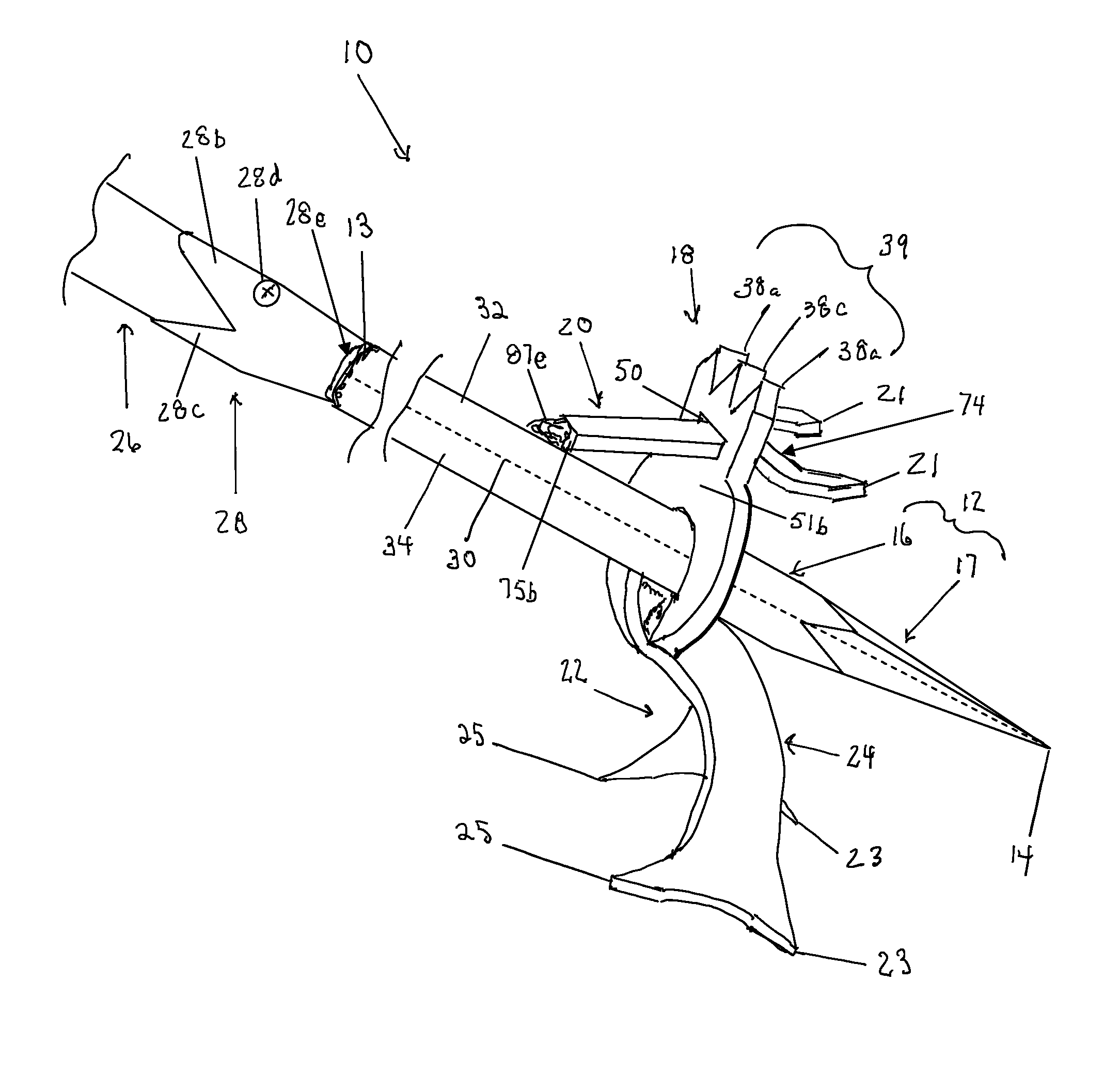Moreover, when the wood settles and lays flat on top of the coals beneath it, the wood surface in contact with coals is starved of
oxygen and drops in temperature.
However, it is a big deal when using split wood that has two to three flat sides.
The initial shape of a cooking fire is not properly organized for cooking.
These attached embers essentially starve the fresh wood fuel that is beneath it, thus stagnating the fire.
When this happens, fresh fuel in the form of wood is exposed to the fire and burns hot.
When a fire is built, it is only a matter of time before the original pieces of wood fuel are consumed and no longer produce heat.
However, when the front side's supply has been depleted, the Asador needs to move the wood around on the back side of the fire so that he can use the
shovel to harvest more
coal.
Over the years, numerous designs have been manufactured and / or improvised from existing designs with varying degrees of
frustration.
There are two issues with using the traditional poker design for the Asador's ground fire.
First, most are designed for use in the indoor
fireplace and are too short for the outdoor ground fire.
As a result, they don't provide enough “stand off” from the intense heat of a mature ground fire, and you can get burned.
The length is acceptable for a weak burning
waist-level live-fire, but is insufficient for many applications.
Second, the traditional design does not safely satisfy the above six requirements, specifically when it comes to moving wood around.
Even the fireman's pike is inadequate.
Although its length makes it more desirable than a traditional
fireplace poker, its unwieldy size makes it inefficient for the Asador's use.
Obviously, an improvised poker is better than using your hands but, like the traditional design, it's at best an undesirable substitute.
This poker has a
straight segment that extends past the hook portion by about one inch, this distance is not significant enough to allow for the
straight segment to be utilized for stoking a fire without having the hook portion interfere with the process and the hook will not provide for delicate displacement of material (e.g. logs) used to fuel the fire often allowing the wood to slip or turn on the hook.
The hook member may provide less efficiency when manipulating the delicate displacement of material (e.g. logs) used to fuel the fire.
Materials may easily spin and slip off the hook.
Additionally, the loop shaped hand grip and the bend in the shaft may make the positioning of materials difficult in the direction of the pointed end of the poker.
This makes it difficult to place materials on the fire.
Additionally, none of the prior art patents provide a means to scrape the burning material surface to
expose new fuel to the fire or do the prior art patents provide an effective means to
push and pull the materials, such as logs, reducing the likelihood that the log or other material will turn and slip before the material's desired position in the fire is obtained.
Finally, none of the prior art patents provide a means to physically “spear” and penetrate the wood so that the heaviest of logs can be safely picked up and strategically placed on any part of the fire in a controlled manner, instead the prior art patents appear to rely on instruments having a more “blunted” end to probe the fire.
The prior art patents are for designs that solely manipulate a fire of an indoor
fireplace, and they are not for devices that are very useful to the Asador as he manipulates an outdoor ground fire.
 Login to View More
Login to View More  Login to View More
Login to View More 









